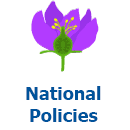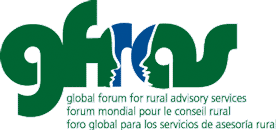There is growing interest in better leveraging agricultural extension and advisory services (AEAS) for nutrition-sensitive agriculture (Fanzo et al. 2015; GFRAS 2016a). Pluralistic AEAS (defined in Box 1) includes public, non-governmental organization (NGO), and private sector entities that regularly interact with millions of farmers. For readers who are more familiar with health programming, AEAS play a role similar to community health workers (CHWs). It should be noted, however, that AEAS typically engage farming households with the potential to produce a marketable surplus (USAID 2016), whereas CHWs focus on populations most vulnerable to poor health. Enlisting AEAS as vital partners in the UN Decade of Action on Nutrition is essential to realizing the Sustainable Development Goals and 2025 World Health Assembly targets. They are the foot soldiers positioned to play a key role in realizing healthier food systems. Their specific contributions, however, must build on their core competencies and will only be realized when there is alignment between programmatic, market and policy incentives.
 Every country has developed, formulated, and decreed national policies related to rural advisory services. Find some examples here. If you are looking for a national policy from a specific country, please use the search function, selecting the category “National policies” and the tag for the country.
Every country has developed, formulated, and decreed national policies related to rural advisory services. Find some examples here. If you are looking for a national policy from a specific country, please use the search function, selecting the category “National policies” and the tag for the country.
Tuesday, 08 May 2018 14:53
Agricultural Extension and Advisory Services: Frontline Contributors to the Nutrition Decade
Written by Ingrid OliveiraDownload here4407 times downloaded
Published in
Reviews and Assessments
Latest from Ingrid Oliveira
- Sustainable Undernutrition Reduction in Ethiopia: Training manual for Health and Agriculture Development Armies
- What Every Extension Worker Should Know - Core Competency Handbook
- Sustainable Nutrition Manual Part 3: Healthy Designs
- Sustainable Nutrition Manual Part 2: Healthy Environments
- Sustainable Nutrition Manual Part 1: Healthy Humans


